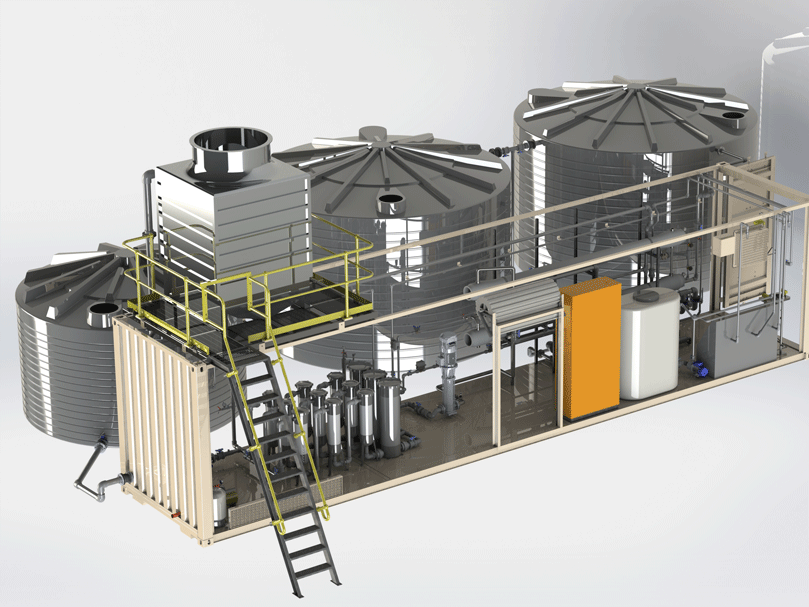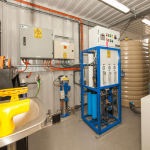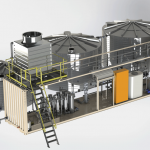
Reverse Osmosis
Reverse osmosis (RO) is a water purification process that uses a semi-permeable RO membrane to remove ions, unwanted molecules and larger particles from drinking water.
Description
Reverse osmosis (RO) is a water purification process that uses a semi-permeable RO membrane to remove ions, unwanted molecules and larger particles from drinking water.
In the RO process, external mechanical pressure generated by a high pressure pump is applied to overcome osmotic pressure of the membrane. The pressure forces the water across the semi-permeable RO membrane, leaving almost all (around 95% to 99%) of dissolved salts behind in the reject stream.
The amount of pressure required depends on the salt concentration of the feed water. The more concentrated the feed water, the more pressure is required to overcome the osmotic pressure.
The desalinated water that is demineralized or deionized, is called permeate (or product) water. The water stream that carries the concentrated contaminants that did not pass through the RO membrane is called the reject (or concentrate) stream.
RO can remove many types of suspended and dissolved contaminants, including many biological ones from water, and is used in both industrial processes and the production of potable water. RO is typically used when there is a high amount of dissolved contaminants in the feed water, i.e. salts.
Depending on the application, or salt concentration of the feed, RO typically require high mechanical pressure, starting from at least 5 bar to up to 50 or 70 bar for desalination.






